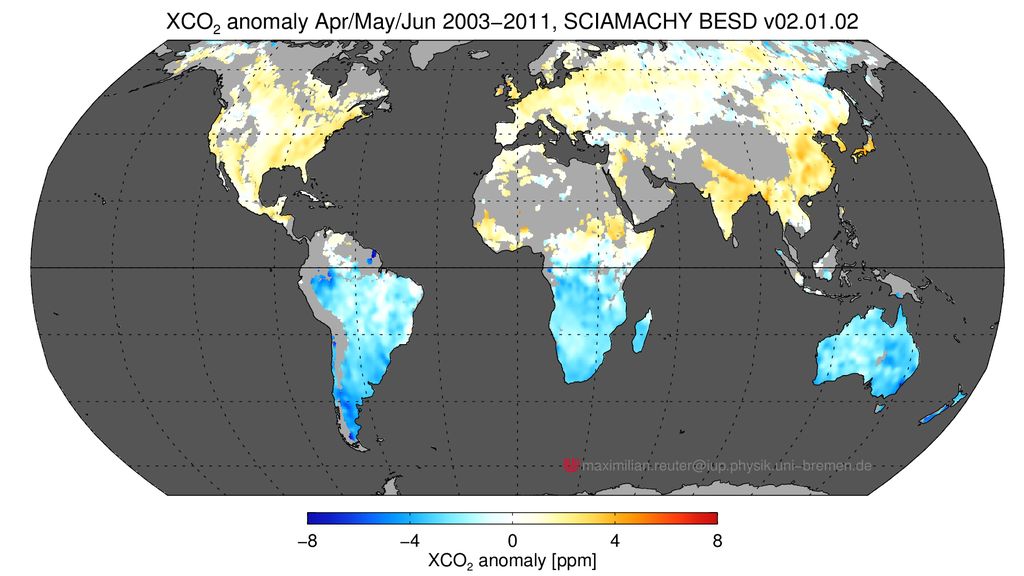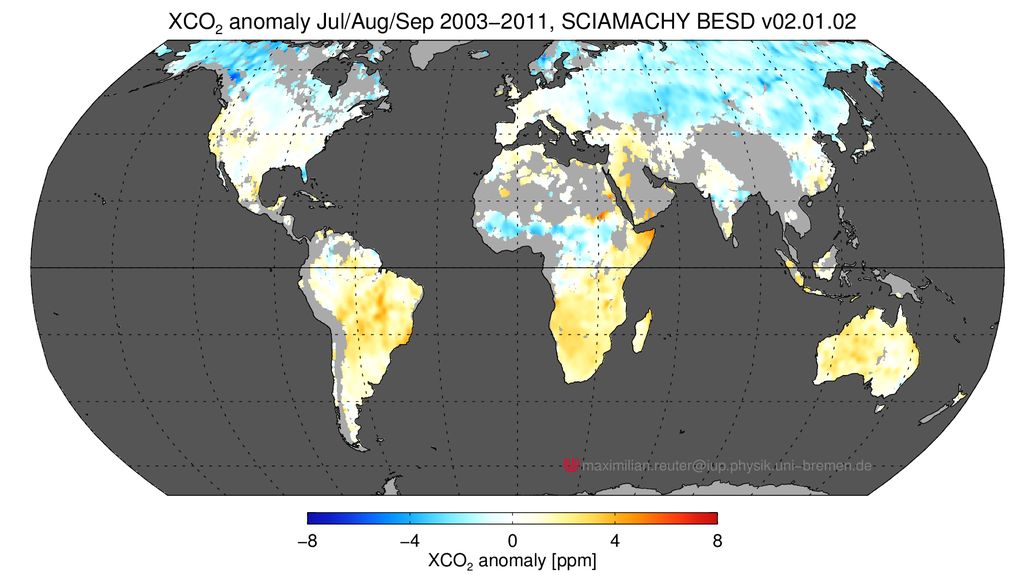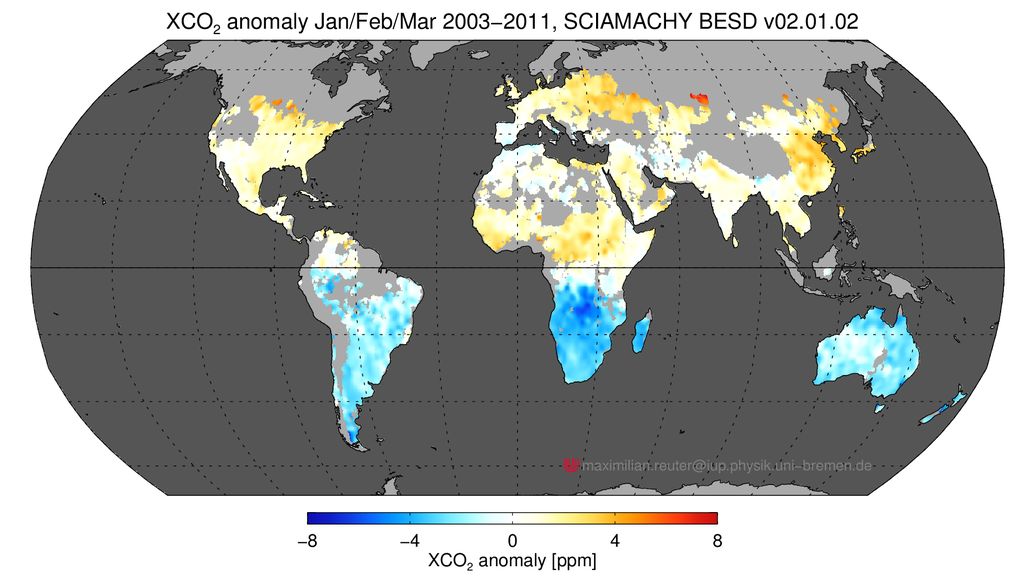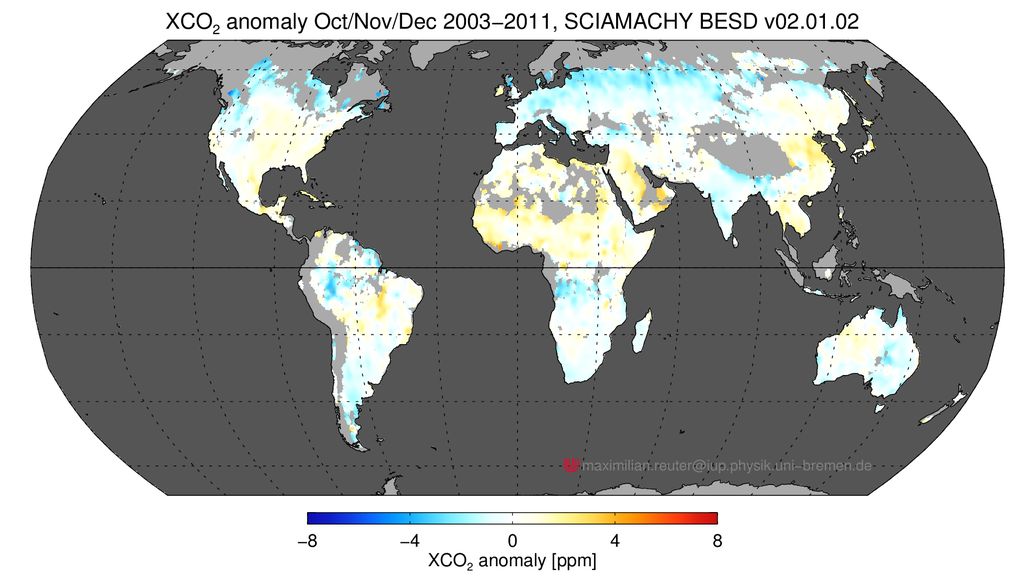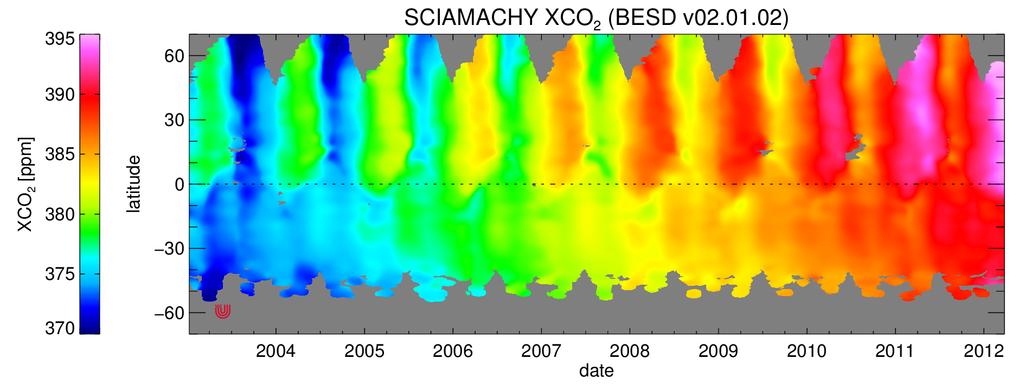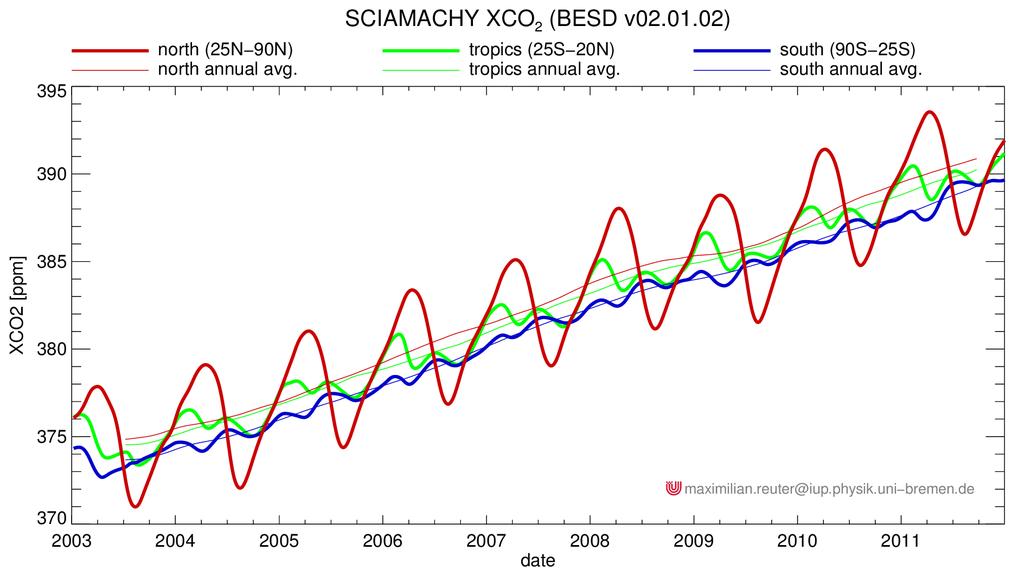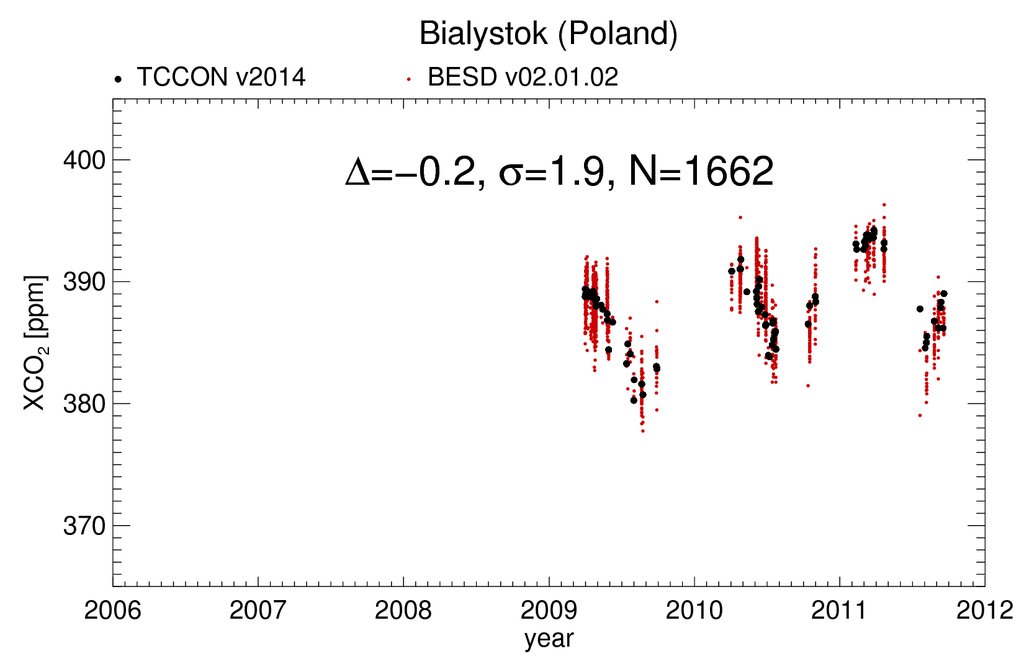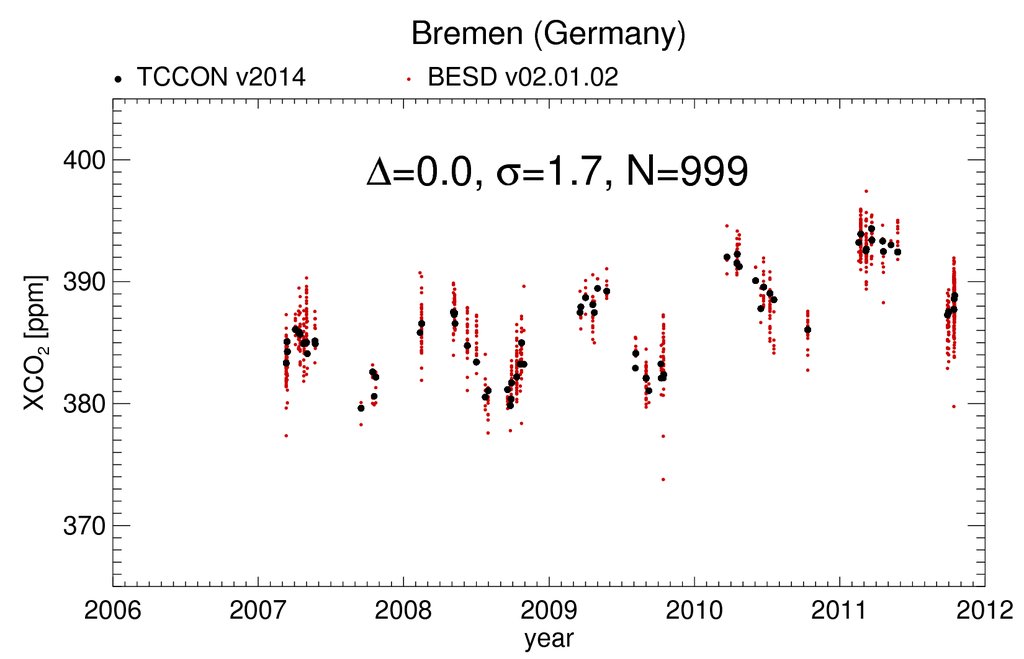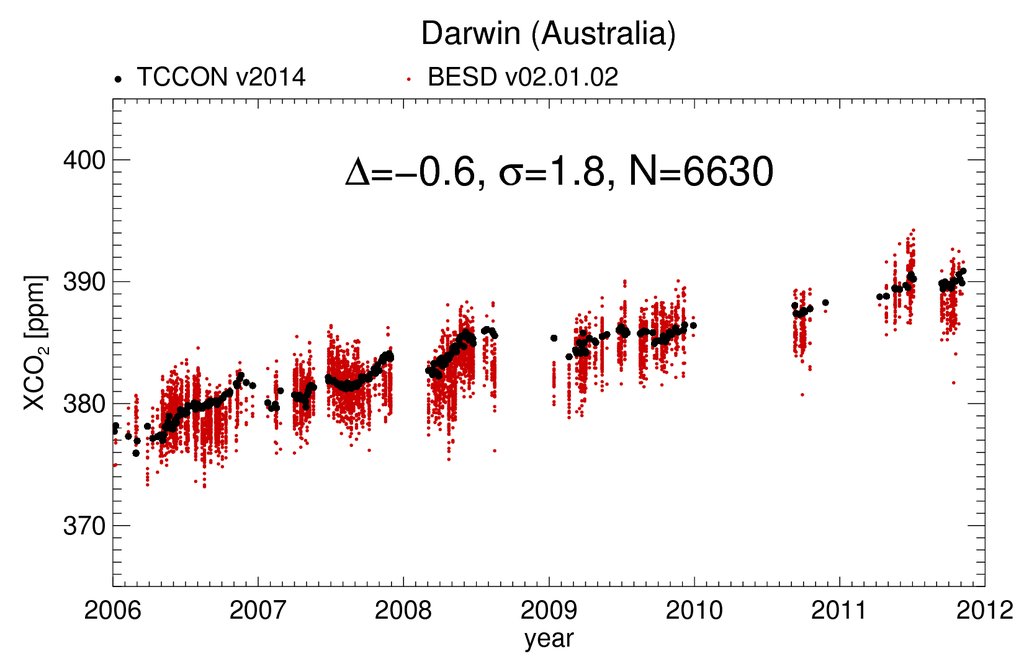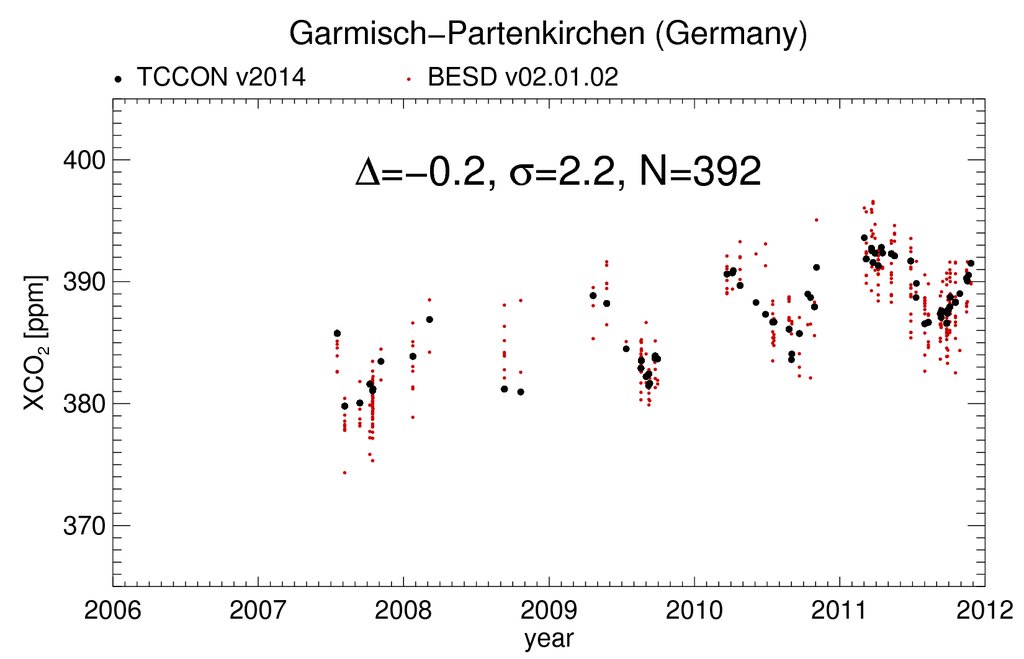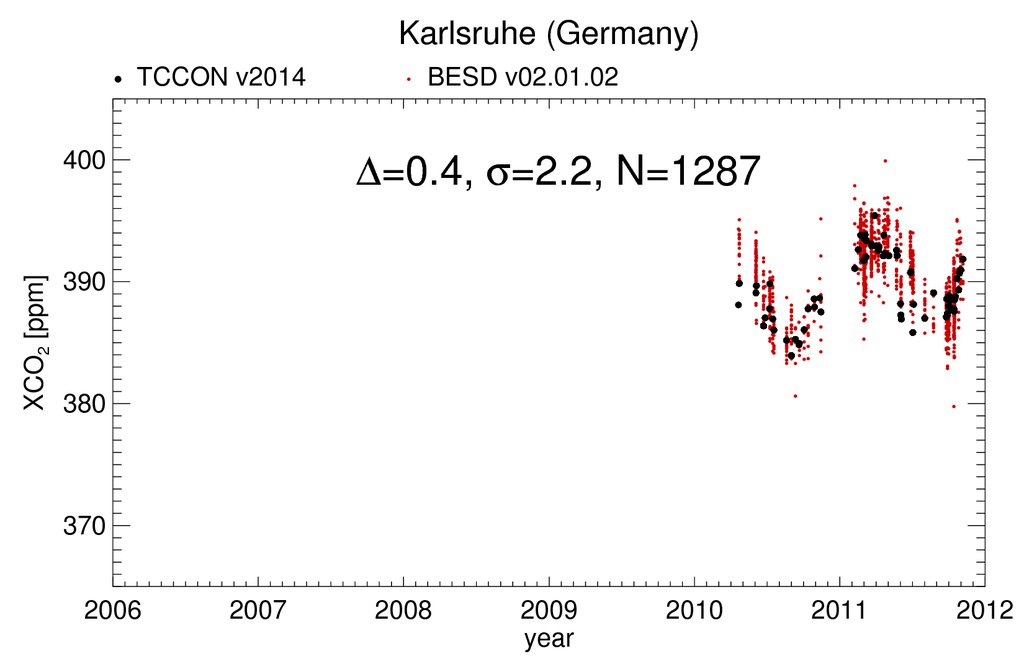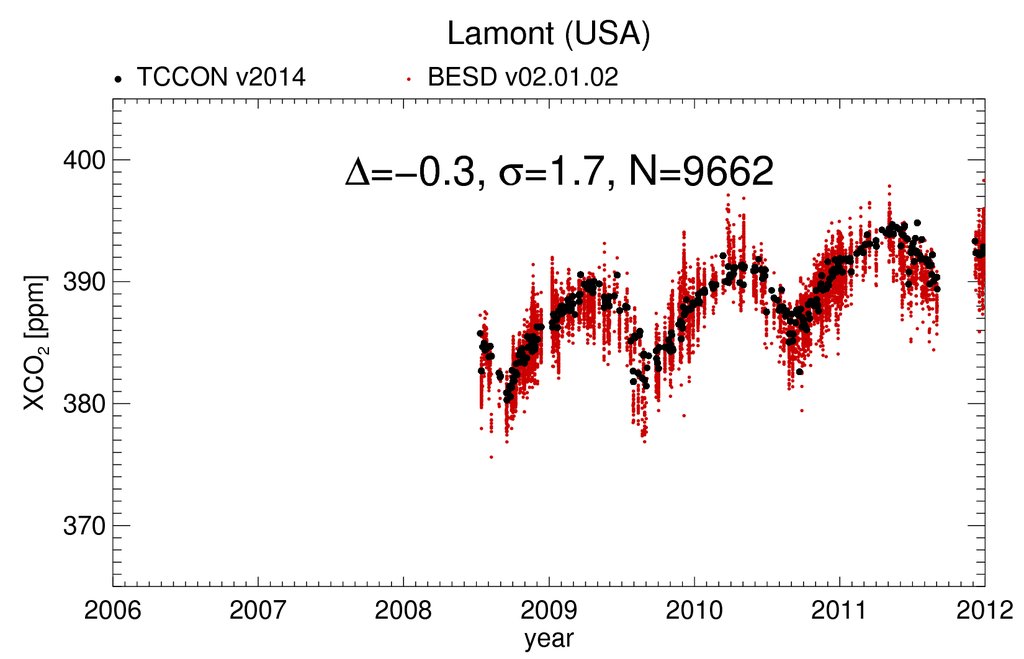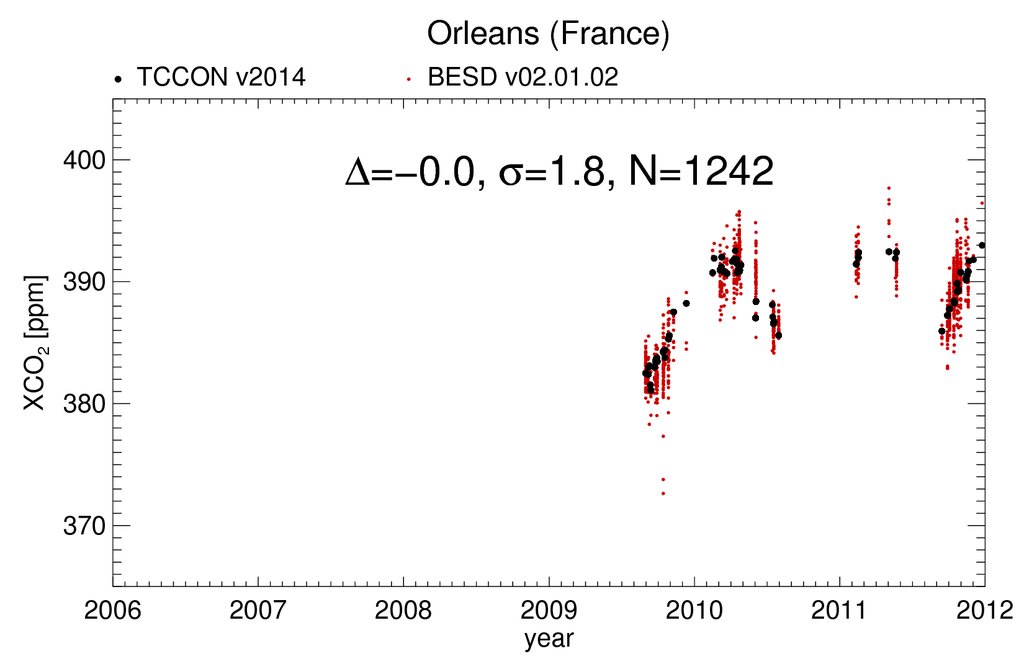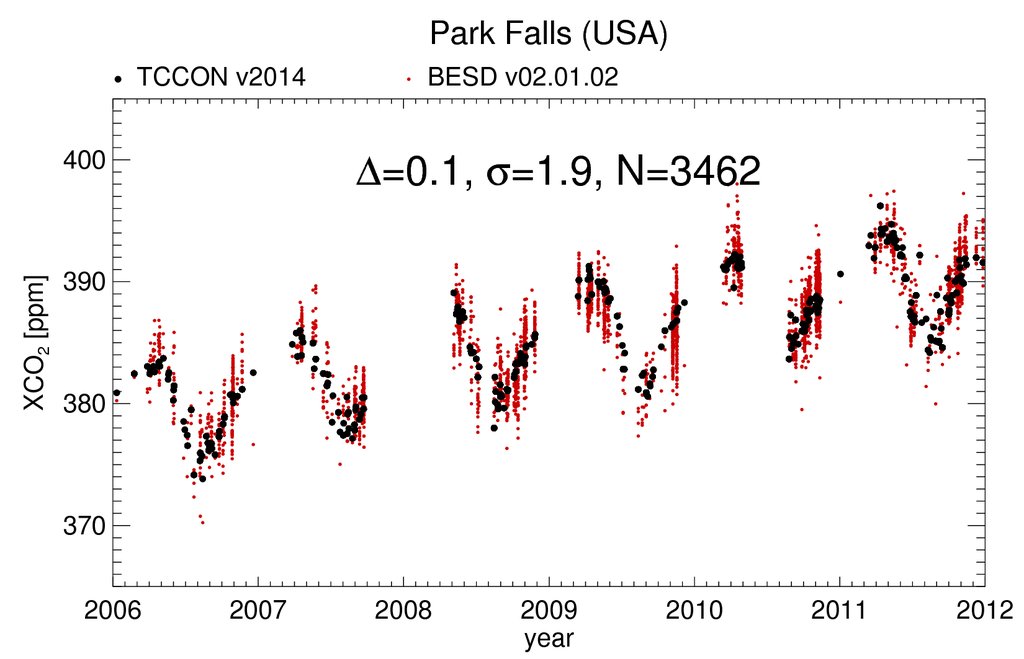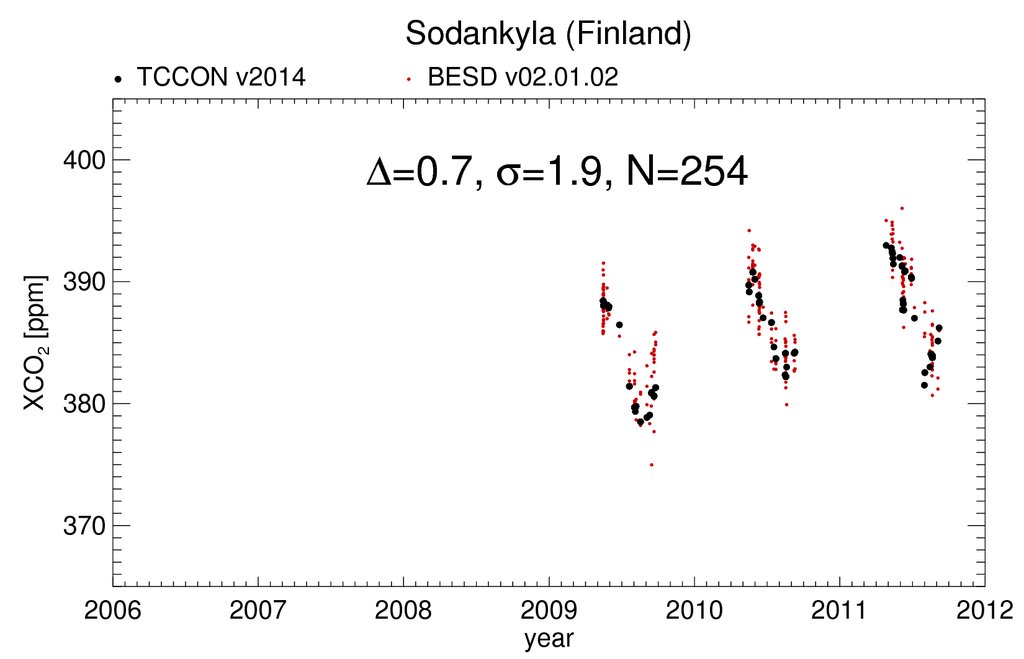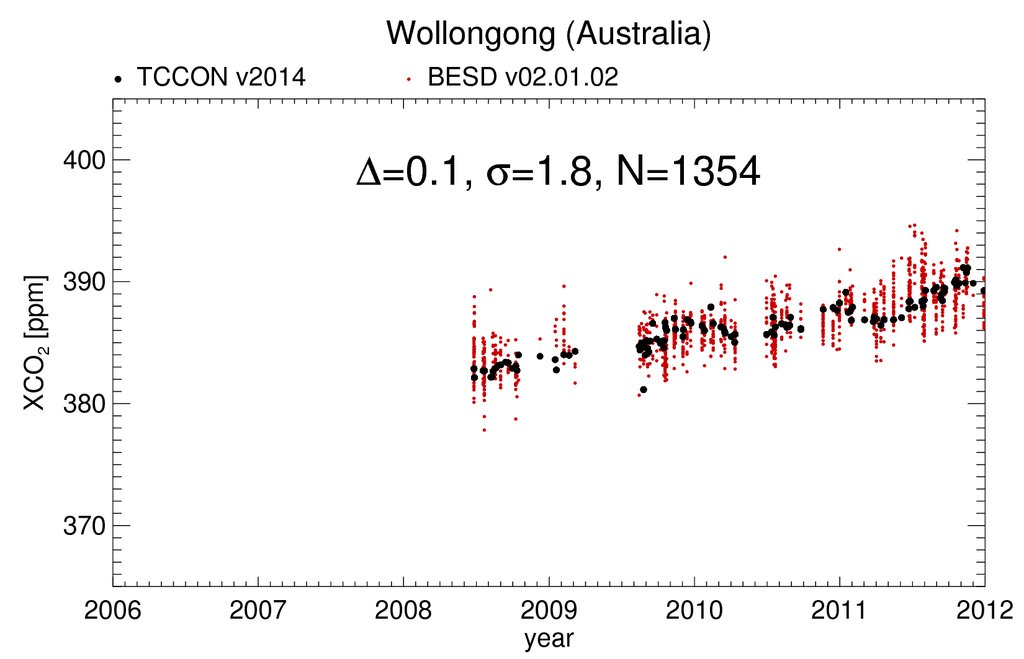Institute of Environmental Physics, University of Bremen
Overview
The Bremen Optimal Estimation DOAS (BESD) algorithm is designed to analyze SCIAMACHY sun normalized radiance measurements to retrieve XCO2 (the column-average dry-air mole fraction of atmospheric CO2). BESD is a so called full physics algorithm which uses measurements in the O2-A absorption band to retrieve scattering information of clouds and aerosols. This information is transferred to the CO2 absorption band at 1580 nm by simultaneously fitting the spectra measured in both spectral regions. The explicit consideration of scattering by this approach reduces potential systematic biases due to clouds or aerosols.
Contact
Dr. Maximilian Reuter
Institute of Environmental Physics (IUP)
University of Bremen, FB1
Otto-Hahn-Allee 1
D-28334 Bremen
Germany
Phone: +49 (421) 218 62085
FAX: +49 (421) 218 4555
E-Mail: maximilian.reuter at iup.physik.uni-bremen.de
http://www.iup.uni-bremen.de/~mreuter
Literature / ATBD
M. Reuter, H. Bovensmann, M. Buchwitz, J. P. Burrows, J. Heymann, O. Schneising: Algorithm Theoretical Basis Document Version 5 (ATBDv5) - The Bremen Optimal Estimation DOAS (BESD) algorithm for the retrieval of XCO2 for the Essential Climate Variable (ECV) Greenhouse Gases (GHG). 2016 (full text, BibTeX)
M. Reuter, H. Bovensmann, M. Buchwitz, J. P. Burrows, B. J. Connor, N. M. Deutscher, D. W. T. Griffith, J. Heymann, G. Keppel-Aleks, J. Messerschmidt, J. Notholt, C. Petri, J. Robinson, O. Schneising, V. Sherlock, V. Velazco, T. Warneke, P. O. Wennberg, D. Wunch: Retrieval of atmospheric CO2 with enhanced accuracy and precision from SCIAMACHY: Validation with FTS measurements and comparison with model results. Journal of Geophysical Research - Atmospheres, 116, D04301, doi: 10.1029/2010JD015047, 2011 (abstract, BibTeX)
M. Reuter, M. Buchwitz, O. Schneising, J. Heymann, H. Bovensmann, J. P. Burrows: A method for improved SCIAMACHY CO2 retrieval in the presence of optically thin clouds. Atmospheric Measurement Techniques, 3, 209-232, 2010 (full text, BibTeX)
+ Image Galery
Data Quality and Known Limitations
BESD's accuracy and precision has been determined by comparison with collocated ground based TCCON (Total Column Carbon Observing Network) FTS (Fourier transform spectrometer) measurements. Regional-scale (station-to-station) biases amount to 0.6ppm. The single measurement precision (standard deviation of the difference to TCCON) is about 2ppm.
Reduced data quality can be expected for dates before mid 2003 probably related to different detector temperatures at start of the mission. It is expected that this mainly results in a smooth drifting and has only minor influence on regional patterns.
+ Version History
Data Access
The data set consists of global data covering the full time series of the ENVISAT misson (2002-2012).
The data-format is NCDF, one file per day.
All NCDF files are compressed into a single tar.gz file.
Please read the product user guide for more information!
Condition of Use
When using BESD data, you agree ...
... to inform us prior to any publication where BESD data products are planned to be used,
... to offer us co-authorship for any planned peer-reviewed publication based on BESD data products (for non peer-reviewed publications it is sufficient if you add an appropriate acknowledgement),
... not to distribute the BESD data products to any third party (the only exception being colleagues working in your institute, in this case you agree to inform them about the conditions listed here and that they also have to accept these conditions).
Acknowledgements
BESD is in part funded by ESA/ ESRIN (GHG CCI, ADVANSE), EU FP7 (MACC-II, MACC, CityZen), DLR (SADOS), and the state and the University of Bremen. We thank NASA for providing the tabulated absorption cross section database ABSCO v4 and the ECMWF for providing the meteorological data.
